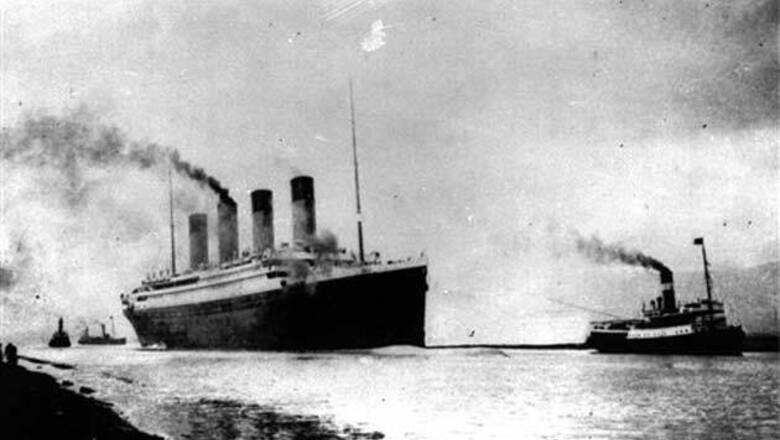
views
United Nations: The wreckage of the Titanic, which has remained at the bottom of the North Atlantic for 100 years, will now come under the protection of the United Nations' cultural body that seeks to safeguard wrecks, decorated caves and other cultural relics underwater.
Till now, remains of the Titanic were not eligible for protection under UNESCO's Convention on the Protection of Underwater Cultural Heritage, which applies only to wreckage that has remained submerged for at least 100 years.
As 2012 marks the 100th anniversary of the sinking of the Titanic, the ship's wreckage will now come under the cover of the UNESCO convention.
"The sinking of the Titanic is anchored in the memory of humanity and I am pleased that this site can now be protected by the UNESCO Convention," UN Educational, Scientific and Cultural Organization (UNESCO) Director-General Irina Bokova said in a statement.
Bokova called on divers not to dump equipment or commemorative plaques on the Titanic site.
Titanic struck an iceberg in the North Atlantic on its maiden voyage and sank on the night of April 14, 1912. The vestiges of the Titanic lie at a depth of 4,000 metres off the coast of Newfoundland.
No single nation can claim the site because the wreck is in international waters. States only have jurisdiction over wrecks lying in their own waters and flying their flag.
However, from now on states parties to the UNESCO convention can outlaw the destruction, pillage, sale and dispersion of objects found at the site.
They can take measures within their power to protect the wreck and ensure that the human remains there are treated with dignity.
The convention provides for a system of cooperation between states parties to prevent exploration deemed unscientific or unethical.
In accordance with the convention, they also have the authority to seize any illicitly recovered artefacts and close their ports to all vessels undertaking exploration that is not done according to the principles of the treaty.
While Bokova expressed satisfaction that the Titanic would now be properly safeguarded, she voiced concern over the damage and looting of the countless other ancient shipwrecks that new technology has made accessible.
"There are thousands of other shipwrecks that need safeguarding as well. All of them are archaeological sites of scientific and historical value.
"They are also the memory of human tragedy that should be treated with respect," she said.
Just as the plundering of cultural sites on land should not be tolerated, the same should be applicable to the remains of the numerous shipwrecks across the world, she said.
Adopted in 2001 by the General Conference of UNESCO, the convention aims to ensure better protection of wrecks, sites, decorated caves and other cultural relics underwater.
This international treaty is a response from the global community to the growing incidence of looting and destruction of submerged heritage sites by treasure hunters.
To date, 41 states have ratified the Convention for the Protection of Underwater Cultural Heritage, which entered into force in January 2009.
Besides shipwrecks, the convention aims to protect such sunken historical sites as the ruins of the Alexandria lighthouse and Cleopatra's palace in Egypt, part of ancient Carthage in Tunisia, and Jamaica's Port Royal, destroyed by an earthquake in 1692, as well as entire landscapes and rock art caves now at the bottom of the sea.















Comments
0 comment